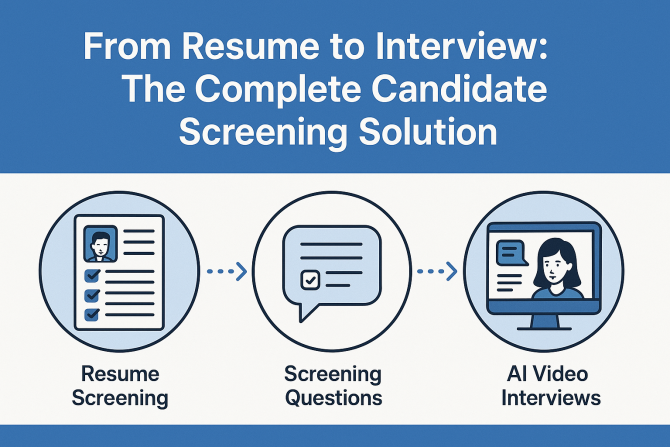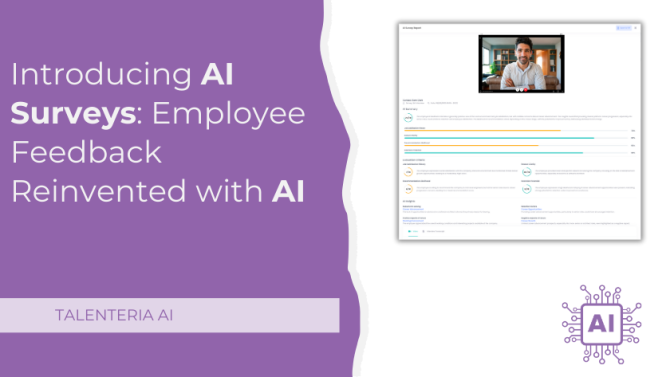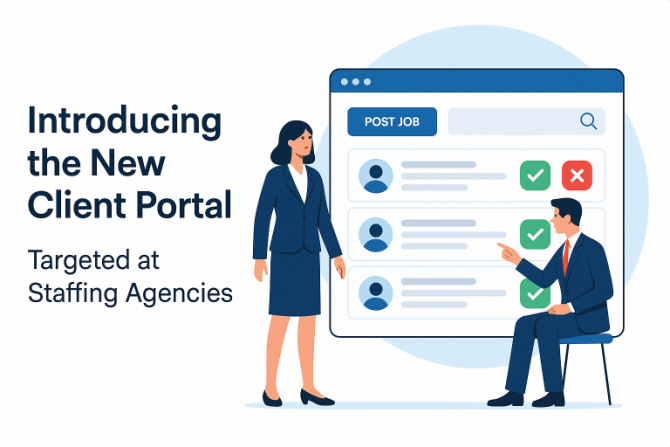
Innovative Recruitment: Methods, Trends, Benefits, and More
The world is changing. As we must either adapt or perish, the need for innovation in everything we do is paramount. Nowhere is this need more significant than in the case of recruitment. The world revolves around human capital, and recruiting methods must change to keep pace with the times.
With the advent of new technology, it should be no surprise that previous decades’ needs and inspirations would fail now. Firms who understand this invest in innovative new recruitment methods and implement the most effective strategies to win for themselves a better, more efficient workforce.
However, it is easy to think about employing innovative recruitment tactics, but it’s a very different beast when it comes to actual practice. Many different factors play into it, and there are many different ways of going about it. In this article, we will take a look at what exactly innovative recruitment hinges upon.
What Factors Impact Recruitment and Job Searches in 2021?
Cause and effect exist everywhere, and the recruitment scene is no different. Before you think about what you want to do, you need to consider a few key statistics. These will shape the kinds of strategies you adopt to bring in new blood.
- The unemployment rate in the US has had a very topsy-turvy time. As of December 2020, the unemployment rate is holding steady at 6.7%. At the height of the pandemic, this figure was as high as 14.7% in April of last year. The country is pulling itself up by the bootstraps, so you can expect there to be a workforce eager to do some work coming out of the pandemic.
- In December 2020, the unemployed population in the United States was about 10.74 million. In contrast to that, the Labor Department reports that the country lost some 140,000 jobs in the same month. That means you have people willing to work, but not many places where they can be used.
- Amidst an escalating pandemic situation, more than a quarter of all American jobs are under threat from Artificial Intelligence and automation. This amounts to about 36 million jobs that have been classified as “highly exposed” to automation.
Overall, the job market looks haggard. Opportunities seem bleak. The pandemic has done a lot of damage. Though things looked strong in the last quarter of 2020, the market has taken a nosedive in 2021 again.
What Are the Most Important Recruiting Stats for 2021?
The job market is a dynamic place, and there are many, many different categories to stay on top of. We have endeavored to give you a hint of the many categories and related statistics you need to keep in mind if you want to adapt to changing conditions and update your recruiting methods accordingly.
The Troubles Facing Recruitment
- Professionals specializing in talent acquisitions spend more than 30% of their time at work finding candidates for a single position. One in three of them put in over twenty hours per week on this.
- The hiring process itself is rife with delays and problems, as 50% of recruiters claim. Added to that, 44% of all hiring managers have complained that reviewing resumes eats up most of their time, thus causing delays down the pipeline.
- As many as 67% of all recruiters say that the biggest challenge they face in filling a position is the availability of skilled and experienced candidates.
- Among the candidates themselves, 78% are not a fan of losing jobs to AI and automation. 21% are “extremely worried” about this happening, while 67% are slightly less so.
- The average cost per hire of companies in the US is around $4000.
- April - June is the busiest hiring time.
The Role of Automation and AI in Recruiting Methods
- As recently as 2018, 91% of tech companies were looking into using and incorporating sourcing tools and other related technology.
- 64% of hiring managers and recruiters will be including AI-powered recruiting software in their budgets. Streamlining the process at some added expense seems to them to be worth it.
- Almost three out of five Americans know nothing about how AI uses algorithms to find the best-suited candidates. Simultaneously, just as many Americans think that whatever the process is, it makes sense to use AI.
Where Do Recruiters Hire From?
- LinkedIn is the easy answer, with about 77% of recruiters nowadays relying on that site as a recruiting method. However, they are not as dependent on LinkedIn as they used to be in 2017 when that number was as high as 92%.
- Social media is, unsurprisingly, a big player in the hiring process. 47% of all recruiters find their candidates through social media. Around 21% do this through the company website, while 12% of recruiters attract candidates through advertising and marketing.
- Half the recruiters in America still use email to reach out to candidates, but it faces stiff competition from LinkedIn messages, which are preferred by 30% of the recruiters.
- A quarter of all recruiters are using Instagram as a new candidate sourcing platform. This change is being led by millennials, who form about 35% of the recruiters’ population and most of the recruiters in various tech industries - 63%.
Trends in Recruitment Methods for 2021
- A little over 90% of all recruiters confirm that soft skills are more important at the organizations they hire for. This trend is likely to carry forward well into this decade, so this is one to look out for.
- Despite the desire and need for soft skill specialists, more than half of the companies fail to spot, assess, or utilize soft skills properly.
- Pay transparency is a big thing. If you think that the pay should be in the job description, then 53% of the hiring managers agree with you. It is much more efficient if you don’t waste all your day at an interview to find out that the pay package is soft.
- In the “Me Too” movement’s aftermath, companies worldwide have taken workplace harassment to be a severe offense. Four out of five companies have taken steps to make sure things like that never happen again, and this sentiment is one likely to spread more and more.
- When 72% of recruiters cite workplace flexibility as an important issue, you know you’re onto something. Especially due to the pandemic, with people getting used to working full time from home and being just as productive and efficient, the workplace culture needs to change to accommodate this new normal.
- Candidates will always look at reviews before applying, just like they do on Amazon. Websites like Glassdoor that offer reviews about company cultures are an invaluable part of this process now.
- By 2030, the sector which will have the greatest boom - and the greatest demand - will be technology-based jobs and skills like programming, coding, etc. The estimated growth right now is about 55%.
Now that you are armed with these statistics, it will help you filter your results and show you what to look for and where. But how do you attract the new blood to your company? That’s what you clicked on the article for, after all. Well, for that, you’ll need newfangled methods, and those are what we will discuss in the next section.
Innovative Recruitment Methods
To keep up with changing times is the mark of wisdom. There is a particular gap between knowledge and wisdom. All the statistics we have provided you so far will bolster your knowledge, and now we will also give you wisdom from many others in the field and show you how they use innovative recruitment methods. There is no better way to learn.
Here are some of the recruitment methods used by successful companies:
1. Writing Proper Advertisements for Vacancies
When trawling through LinkedIn, you will find hundreds of job listings that include phrases like, “young, female candidates only” or “men need not apply.” This is offensive to the point of turning people away from the job. It makes the company come off as non-inclusive when everyone is looking for acceptance and acknowledgment. This sort of thing is to be avoided.
For that express reason, many recruiters use AI-powered writing software. These AI go through thousands of job listings and generate an advertisement that has the highest chance of attracting candidates.
2. Go Where Your Candidates Are
As a recruiter or hiring manager, you need to know what kinds of candidates you want. You need to know what demographics to attract, and you need to know where to find them. Just like how Amazon advertised jobs on Tinder, you need to find out where the people you want send their time and appeal to them there.
Yes, you might call this programmatic advertising and say that it’s old news now, but now many job listings are being posted on TikTok. Think about the vast number of young people who use that app and the additional exposure the job listing gets. That’s how you innovate. You find a way to use old ideas in new ways.
3. Invest in Video Interviews
This one might seem like a no-brainer, but it is worth mentioning. Video interviews are great, especially if your candidates live abroad. It lets you conduct your interviews from the comfort of home. Such interviews save all parties involved a lot of time and money while also allowing you to reach beyond local talent and tap into a worldwide workforce.
However, you might want to consider taking this a few steps further. You could get AI software that tracks body language, eye movement, response rates, and other such statistics during an interview to give you an assessment about how well the candidate will do at the job if hired. You can make hiring decisions based on that.
4. Use Freelancers Whenever You Can
The gig economy has taken off big time. If you need some specialized work done on a tight deadline, freelancers will get it done. They live for such situations. Working with freelancers will open up a whole new world of short-term contractual workers and make sites like Fiverr your best friend.
Because you don’t have to hire them, you save time and money by not going through the hiring process. On the other hand, if they impress you with their work, you now know who to keep in mind when you need to fill a position.
5. Tapping Into Passive Candidates
Passive candidates are people who are happy at their current jobs and not looking for a change. Whereas before, it was impossible even to find them, using social media as a recruiting method has made it incredibly easy to reach out and establish contact with these people.
What’s the point if they are happy? If they are not satisfied in the future and are looking for a change, guess who they are likely to reach out to first? Exactly. By establishing contact and building a rapport over time, you open roads for a lot of people to take directly to your company. This is why you need to keep an eye on professional social media networks.
6. Employee Referrals
Sometimes, your existing employees will suggest a hire that you can look into. This saves you time because you didn’t have to go looking. On top of this, candidates who are employed based on their friends’ referrals tend to be more hardworking. This innovative recruitment method is a win-win situation for you and the company.
This is why you should keep a good employee referral system. Make it easy to use so that it is accessible, offer monetary and other benefits - like more holidays - to employees who make referrals, keep the referrers posted about their referred candidate’s progress, and give them a word of encouragement for helping out the company. This should keep them motivated and inspire others to refer more people they know.
7. Texting
We assure you, this is not a joke. Texting is a proven better recruitment method than emails. Only 6% of emails get opened, while this rate is 92% for text messages. The response rate is high, too, at 46%. It is just more convenient for people to open and read a text than an obvious email.
You can use text messages to confirm and schedule meetings and appointments, check in with employees and candidates about assignments and interviews, and simply engage with them during the hiring process and keep them posted. They will appreciate it.
8. Use Social Media to Test the Skills of Your Candidates
If you know your candidates, you will know where to find them. The more followers you have on a social media platform, the more responses you will get when you ask your followers to showcase job skills. A fun little activity will both be enjoyable and give candidates a reason to apply.
For example, McDonald’s started its hiring process by asking candidates to submit a short Snapchat video explaining why they would be a good fit. For designers and coders, you could give them a program to code. For artists, you could do an art contest for a concept or idea and pick the best of the lot. The possibilities are endless here.
9. Give Them a Virtual Tour
Given the current climate, VR is something you need to keep in your toolbox. Since everyone is confined to working from home, for the most part, you can’t give them a tour of the workplace and show off all the cool things they would have access to. Not physically, at least, but virtually? Virtually, the floodgates are open wide.
With a VR headset, you can show your remote candidates exactly why they ought to work for you. Show them that yours is an exciting enterprise. Show them why they should choose you. You can expect VR to grow in the years to come and turn into an intrinsic part of work culture. You might want to get a head start on this innovative recruitment method.
10. Crunch Some Numbers
Figuratively, of course. You need to have solid data on your hands to know what you are looking at while hiring. What channels are most successful when it comes to hiring candidates? How much time does it take, on average, from realizing that you need to hire people to actually hiring people?
A data-driven hiring process answers questions like this so that you know what works and what you can improve on. It is indispensable as a tool nowadays, given the rise in the importance of fields like data analysis. Make the most of it.
11. Employer Review Sites
As we have mentioned before in this article, people like reading reviews before deciding whether they will invest their time in something. Whether it be movies or jobs, the approach is the same. Therefore, to raise your profile, you should consider sites like Glassdoor as an important part of your recruiting methods.
Candidates want to know about the company’s values, reputation, and corporate culture, so make sure you foster one that will attract people and communicate that to candidates right out of the gate.
12. Welcome the Aged Into Your Workforce
Every single day, a few thousand people read the age of retirement. You should have a measure in place that allows them to return and add value to your company. The truth is that there are a lot more experienced people retiring than talented new people coming in.
Even if you can’t convince the aging employees to delay retirement - everybody needs that vacation, after all - you can invest in a mentoring program. This allows your experienced employees to pass on their experiences, tips, tricks, and strategies to the younger generation. Turn their ceiling into the floor for the young ones to grow upon.
The best part is, you will be tapping into an age-old custom of the old teaching the new. This will improve cross-generational understanding and communications on top of giving the more inexperienced new hires a reliable source of knowledge and information.
13. Open-Ended Job Descriptions
For the longest time, people were selected for a job based on how much experience they had and how many desired attributes they checked off on the HR list. This is not the case anymore.
The general job description is changing. Specific specifications about experience and skills are being left out to encourage a wider pool of applicants to give it a shot. Choosing someone who is a good fit for the company is a better investment than a talented jerk. Training can always be provided, but people who bring down the company as a whole are best avoided.
14. It’s All About the Game and How You Play It
Truer words have seldom been spoken. Besides, who doesn’t like playing games? You can use games as a part of your recruitment process and give out rewards like experience points, badges, and achievements to those who perform better.
Through the game itself, you can gauge the candidate’s problem-solving skills. If you can somehow make it multiplayer or co-op, you can also see how well they work in a team environment. This tells you more about the kind of person you are hiring and whether they are a good fit. Plus, it’s an experience they will never forget, so yay!
Talenteria - Implement Your Own Innovative Recruitment Method
Armed with both knowledge of what makes the market tick as well as what you can do to attract the best and brightest to your company, you are now ready to take on the ever-changing world with a plethora of innovative recruitment techniques. And what makes this even simpler? Talenteria’s Career Portal and Recruitment Marketing Platform enables HR managers to build their talent pools, track analytics, build their employer brand, and much more - all from one place. Reach out to us today to learn how you can implement innovative recruitment methods with Talenteria.





